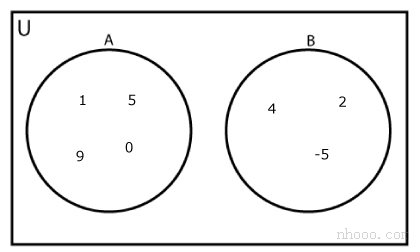Python 基础教程
- Python 简介
- Python 入门
- Python 关键字和标识符
- Python 语句,缩进和注释
- Python 变量,常量和字面量
- Python 数据类型
- Python 类型转换
- Python 输入,输出和导入
- Python 运算符
- Python 关键字列表
Python 流程控制
Python 函数
- Python 函数
- Python 函数参数
- Python 递归(Recursion)
- Python 匿名函数(Lambda)
- Python 全局,局部和非局部变量
- Python Global 关键字
- Python 模块
- Python 包(Package)
- Python 自定义函数
Python 数据类型
- Python 数字(Number)
- Python 列表(List)
- Python 元组(Tuple)
- Python 字符串(String)
- Python 集合(Set)
- Python 字典(Dictionary)
- Python 集合方法
Python 文件操作
Python 对象和类
Python 日期和时间
- Python 日期时间(datetime)
- Python strftime()
- Python strptime()
- Python 当前日期和时间
- Python 获取当前时间
- Python 时间戳( timestamp)
- Python time 模块
- Python sleep()
Python 高级知识
- Python 命名空间和作用域
- Python 迭代器
- Python 生成器
- Python 闭包
- Python 装饰器
- Python @property
- Python 正则表达式(RegEx)
- Python 随机模块(Random)
- Python 数学模块(Math)
- Python 数组
- Python main() 函数
- Python 字典理解
- Python 多态
- Python pip
- Python 矩阵和NumPy数组
Python 参考手册
Python 集合 isdisjoint() 使用方法及示例
如果两个集合是不相交的集,isdisjoint()方法返回True。如果不是,则返回False。
如果没有公共元素,则将两个集合称为不交集。例如:
A = {1, 5, 9, 0}
B = {2, 4, -5}在这里,集合A和B是不相交的集合。

isdisjoint()的语法为:
set_a.isdisjoint(set_b)
isdisjoint()参数
isdisjoint()方法采用单个参数(一组)。
您还可以将一个可迭代的(列表,元组,字典和字符串)传递给isdisjoint()。isdisjoint()方法将自动将可迭代对象转换为set,并检查这些set是否不相交。
isdisjoint()的返回值
isdisjoint()方法返回
True 如果两个集合是不相交的集(在上面的语法中如果set_a和set_b是不相交的集)
False 如果两个集合不是不相交的集合
示例1:isdisjoint()如何工作?
A = {1, 2, 3, 4}
B = {5, 6, 7}
C = {4, 5, 6}
print('A和B不相交?', A.isdisjoint(B))
print('A和C不相交?', A.isdisjoint(C))运行该程序时,输出为:
A和B不相交? True A和C不相交? False
示例2:将isdisjoint()与其他Iterables作为参数
A = {'a', 'b', 'c', 'd'}
B = ['b', 'e', 'f']
C = '5de4'
D ={1 : 'a', 2 : 'b'}
E ={'a' : 1, 'b' : 2}
print('A和B不相交?', A.isdisjoint(B))
print('A和C不相交?', A.isdisjoint(C))
print('A和D不相交?', A.isdisjoint(D))
print('A和E不相交?', A.isdisjoint(E))运行该程序时,输出为:
A和B不相交? False A和C不相交? False A和D不相交? True A和E不相交? False